Kinetic Art – The History of the Kinetic Art Movement
The Kinetic Art movement, also known as Kineticism, emerged in the 20th century as a response to the limitations of traditional art forms. At its core, Kinetic Art celebrates movement and time as fundamental elements of artistic expression. Kinetic artists work with a variety of media and techniques, including mechanical devices, natural forces, and interactive technologies to create works that are in constant motion and engage the viewer on a deep and experiential level. In this article, we will explore the definition of Kinetic Art, the history of the Kinetic movement, and the contributions of some of the most important Kinetic artists of the 20th century.
Contents
Kinetic Movement: Kinetic Art and Its Origins
The Kinetic Art movement emerged in the mid-twentieth century as a response to the changing cultural landscape of post-World War II society. Artists working in this movement sought to create works of art that actively engaged the viewer through movement, sound, and light. Kinetic Art can take many forms, from mobiles and sculptures that move with the wind to installations that use technology to create dynamic visual displays.

Kinetic Art’s Roots
The roots of the Kinetic Art movement can be traced back to the early twentieth century and the work of artists such as Marcel Duchamp (1887-1968) and Alexander Calder (1898-1976). Duchamp’s “Readymades” – everyday objects that he transformed into works of art by adding a signature or altering their context – challenged the traditional boundaries of what could be considered art.
Calder’s mobiles, which he began creating in the 1930s, were similarly groundbreaking in their use of movement and balance to create dynamic sculptures.
The 1950s and 1960s
The Kinetic Art movement as we know it today emerged in the 1950s and 1960s, as artists sought to build on these early experiments in movement and sculpture. One of the key figures in this movement was Jean Tinguely (1925 – 1991), a Swiss artist who created elaborate machines that combined movement, sound, and light. Tinguely’s machines were often constructed from found objects, such as bicycle wheels and scrap metal, and were designed to be activated by viewers who would turn cranks and push buttons to set them in motion. Another important figure in the development of the Kinetic Art movement was Alexander Calder, who continued to produce mobiles throughout the 1950s and 1960s. Calder’s later mobiles incorporated more complex movement and were often powered by electric motors, allowing for a greater range of motion and a more immersive viewer experience.
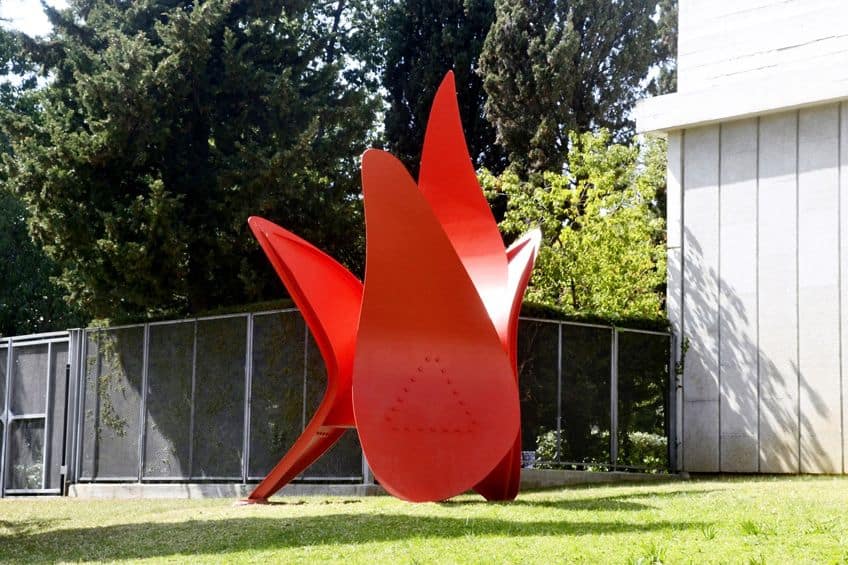
In addition to these individual artists, there were several important exhibitions and events that helped to solidify the Kinetic Art movement as a distinct artistic movement. One of the earliest and most influential of these was the “Le Mouvement” exhibition held in Paris in 1955, which featured works by Tinguely, Calder, and other artists working in the Kinetic Art vein. The exhibition was a critical success, and helped to establish Kinetic Art as an important new direction in contemporary art.
The 1970s
Throughout the 1960s and 1970s, the Kinetic Art movement continued to evolve and expand, as artists experimented with new materials and technologies to create increasingly complex and sophisticated works. Some artists, such as Nicolas Schöffer (1912 – 1992), incorporated computer programming and other forms of electronic technology into their work, creating installations that responded to the movements and actions of viewers.
Other artists, such as Yaacov Agam (1928 – Present), explored the use of optical illusions and other perceptual tricks to create the impression of movement and dynamism in their work. Agam’s “Agamographs” were particularly innovative, using layered sheets of transparent material to create images that seemed to shift and transform as the viewer moved around them.
The Present
Today, the Kinetic Art movement remains an important and influential force in contemporary art, with artists around the world continuing to explore the possibilities of movement, light, and sound in their work. The movement’s legacy can be seen in the work of contemporary artists such as Olafur Eliasson (1967 – Present) and Rafael Lozano-Hemmer (1967 – Present), who continue to push the boundaries of what is possible in the realm of interactive and immersive art.
Kinetic Art Definition: What Is Kinetic Art?
Kinetic Art is a genre of art that relies on movement, time, and space to create visual and sensory experiences for the viewer. It is often characterized by a focus on motion, rhythm, and dynamic effects, and can take many forms, from sculptures and installations to performances and interactive experiences. Let us look at a few specific characteristics of Kinetic Art.

Constant Motion
At its core, Kinetic Art is about creating works that are in constant motion, whether through mechanical means, natural forces, or the actions of the viewer. These movements can be simple or complex, subtle or dramatic, but they are always an integral part of the artwork, shaping the way that it is perceived and experienced.
Formal Qualities
In terms of its formal qualities, Kinetic Art often relies on a combination of materials and techniques, blending elements of sculpture, engineering, and performance to create works that are both visually stunning and conceptually rich. Many Kinetic Artworks are composed of moving parts and mechanisms that are carefully crafted and assembled to create precise and intricate movements.
Others incorporate light, sound, and other sensory elements to create immersive and multi-sensory experiences.
The Relationship to Time and Space
Another important aspect of Kinetic Art is its relationship to time and space. Unlike more static forms of art, which can be appreciated from a single vantage point or moment, Kinetic Art is constantly changing and evolving over time. As such, it invites the viewer to move around and explore the artwork from different angles, experiencing its various aspects and nuances.
Visceral Experience
One of the key features of Kinetic Art is its ability to engage the viewer on a visceral level, drawing them into the experience of the artwork and encouraging them to interact with it in new and unexpected ways. This can be achieved through a variety of means, from the use of sound and light to the incorporation of technology and interactive elements.
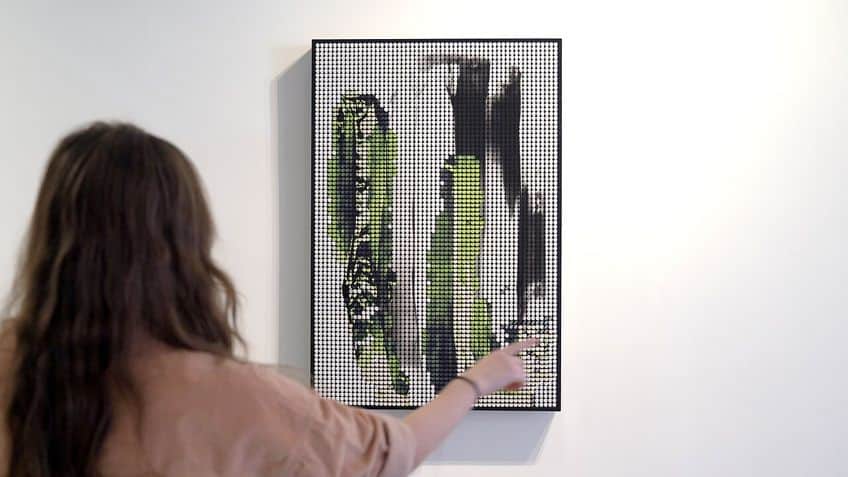
The Influence of the Kinetic Art Movement on the Art World
Kinetic Art’s innovative approach to movement, time, and space challenged traditional notions of static art and inspired a new wave of experimentation and creativity that has left a lasting impact on the course of art history.

An Emphasis on Interactivity
One of the key ways in which Kinetic Art has influenced art history is through its emphasis on interactivity and viewer engagement. Unlike more traditional forms of art, which are often intended to be viewed passively from a distance, Kinetic Art invites the viewer to actively participate in the work, often through the use of interactive technologies or other sensory elements.
The Use of Technology
This emphasis on interactivity and engagement has been a driving force behind many of the major movements and trends in contemporary art, from performance art and installation art to new media and digital art.
Kinetic Art has also played a significant role in shaping the way that artists approach the use of technology and other advanced materials in their work, encouraging them to explore new possibilities for sensory engagement and immersive experiences.
Three-Dimensionality
Another important influence of Kinetic Art on art history has been its impact on sculpture and three-dimensional art. Many of the most iconic works of Kinetic Art are sculptural in nature, featuring moving parts and mechanisms that are carefully crafted and assembled to create precise and intricate movements. These works have helped to blur the boundaries between sculpture and engineering, opening up new possibilities for the use of technology and engineering principles in the creation of art.
Art and Science
Kinetic Art has also been instrumental in challenging the traditional boundaries between art and science, often exploring themes and concepts related to physics, mechanics, and other scientific disciplines. This interdisciplinary approach has inspired a new wave of creativity in the field of art, prompting artists to explore new forms of collaboration and experimentation with scientists and engineers.
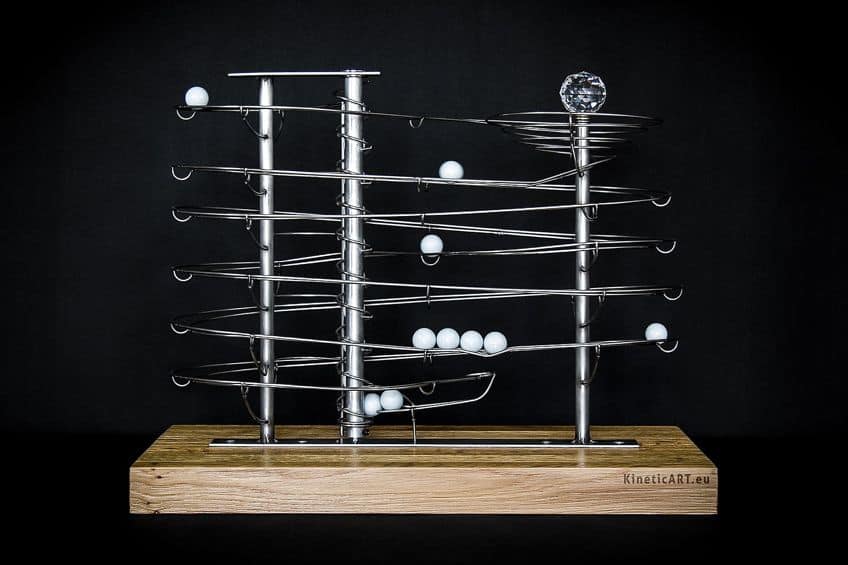
The Transformation of Exhibitions
Finally, the influence of Kinetic Art can be seen in the way that it has helped to transform the way that art is exhibited and experienced. Many of the most iconic works of Kinetic Art are site-specific or designed for specific architectural or environmental contexts, creating unique and immersive experiences for the viewer. This has inspired a new wave of experimentation in the field of exhibition design, prompting artists and curators to explore new ways of creating immersive, interactive, and multi-sensory exhibitions that engage the viewer on a deep and meaningful level.
The First Famous Kinetic Artwork
In the mid-20th century, the art world was rocked by a new movement that celebrated movement, time, and space as essential elements of artistic expression. This movement, known as Kinetic Art, represented a bold departure from traditional forms of art, and its first major piece to make international headlines was the Mobiles (1913) by Alexander Calder.

Artist Abstract: Who Was Alexander Calder?
Calder, born in 1898 and died in 1976, was an American sculptor known for his playful and innovative works that challenged the boundaries between sculpture and engineering. In 1931, he began creating a series of abstract sculptures made from wire and metal that he called Mobiles.
These sculptures were designed to move with the slightest breeze, creating a constantly changing interplay of light and shadow that was both mesmerizing and immersive.
Mobiles: The First Public Exhibition
| Date | 1913 |
| Medium | Multimedia |
| Dimensions (cm) | Various sizes |
| Movement | Kinetic Art |
| Style | Sculpture |
The first public exhibition of Calder’s Mobiles was held in 1932 at the Galerie Vignon in Paris, France. The exhibition was a sensation, with critics and audiences alike marveling at the beauty and ingenuity of Calder’s creations. The French art critic Jean-Paul Sartre (1905-1980), praised the exhibition in an article for the newspaper Le Temps, calling Calder’s work “a new and unprecedented phenomenon in the history of art.” The exhibition was also attended by some of the most important artists and intellectuals of the day, including Marcel Duchamp, (1887-1968), and Joan Miró, (1893-1983), who were both deeply impressed by Calder’s innovative approach to sculpture.
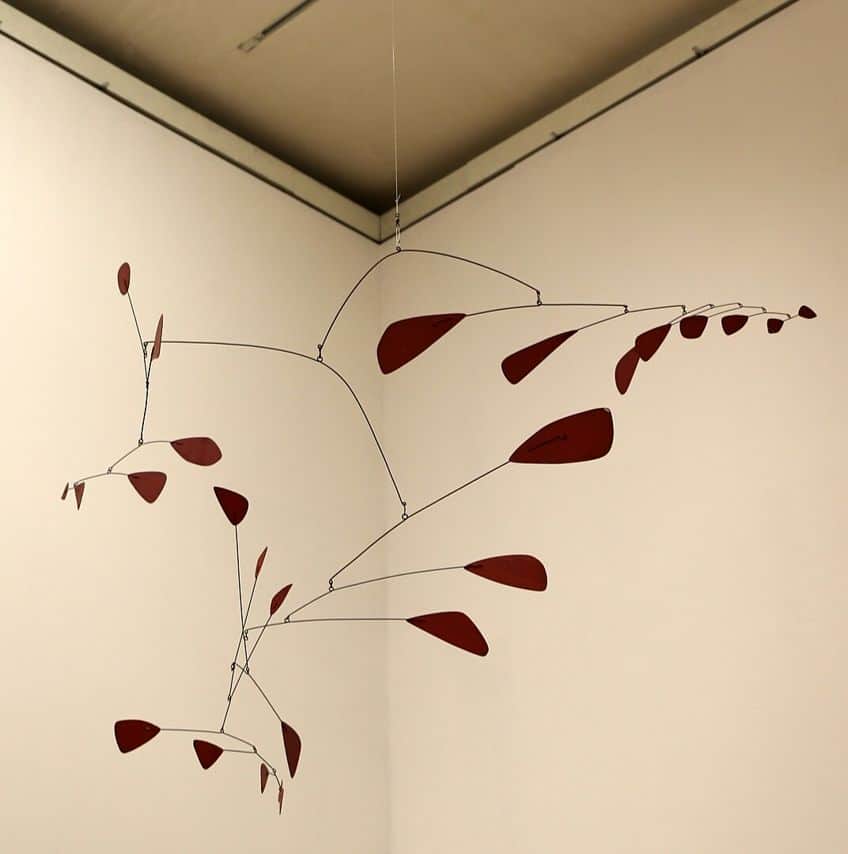
The International Reception of Mobiles
The international reception of Calder’s Mobiles was equally enthusiastic. In 1933, he was invited to exhibit his work at the Museum of Modern Art in New York, where his sculptures were met with rave reviews. The influential art critic Clement Greenberg (1909-1994), wrote in the magazine Partisan Review that Calder’s Mobiles represented a new direction in art, one that embraced movement, time, and space as essential elements of the artistic experience. Today, Calder’s Mobiles remain an iconic and influential example of Kinetic Art. They have inspired generations of artists to explore the possibilities of movement, interactivity, and immersion in their work, and they continue to captivate and engage audiences around the world.
Calder’s contributions to the Kinetic Art movement have helped to shape the course of art history, ushering in a new era of creativity and experimentation that continues to influence artists today.
Kinetic Artists
As discussed above, Kinetic Art is a very broad and diverse art movement. In this section of the article, we will zoom in and explore four prominent Kinetic Art pieces and analyze their visual characteristics and the artists behind them.
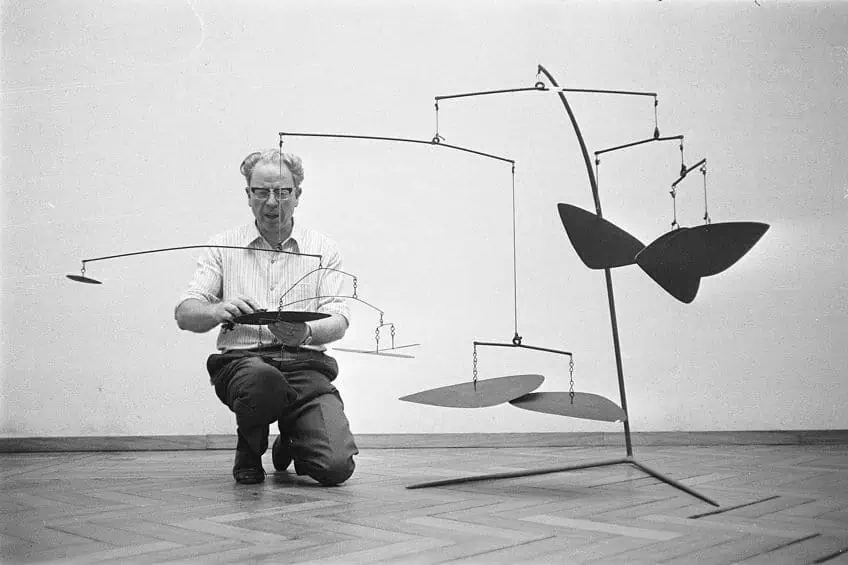
Red Gongs (1950)
| Artist | Alexander Calder (1898 – 1976) |
| Artwork Date | 1950 |
| Medium | Painted aluminum, brass, steel rod, and wire |
| Dimensions (cm) | 152.4 × 365.8 |
| Movement | Kinetic Art |
| Style | Sculpture |
Alexander Calder, born in Lawnton, Pennsylvania in 1898, was a celebrated American artist and sculptor who is credited with revolutionizing the field of sculpture through his pioneering use of movement and balance. Red Gongs is a large mobile created by Calder in 1950, using painted sheet metal and wire. The mobile is suspended from the ceiling and is characterized by a series of abstract geometric shapes that are delicately balanced and set in motion by the slightest breeze.
The piece is a masterpiece of kinetic sculpture and embodies Calder’s innovative approach to form, color, and balance. The artist’s interest in movement and kinetic energy is evident in Red Gongs, which features a constantly changing interplay of light, shadow, and motion that captivates the viewer.
Calder’s unique style and groundbreaking approach to sculpture had a profound influence on the art world, inspiring future generations of artists to experiment with new forms of expression. Red Gongs remains one of Calder’s most celebrated works, and its enduring popularity attests to the artist’s enduring legacy.
Homage to New York (1960)
| Artist | Jean Tinguely (1925 – 1991) |
| Artwork Date | 1960 |
| Medium | Multimedia |
| Dimensions (cm) | 701.04 x 822.96 |
| Movement | Kinetic Art |
| Style | Sculpture |
Homage to New York is a landmark work of kinetic sculpture created by Jean Tinguely, a Swiss artist known for his playful and whimsical approach to art. Born in 1925 and passing away in 1991, Tinguely combined found objects and mechanical devices to create works that celebrated movement and the passage of time. Homage to New York is one of his most famous works, a large-scale sculpture that was created to self-destruct in front of an audience.
The sculpture was made from scrap metal and included a series of motors and gears that were set in motion by a timer. As the timer ran down, the sculpture began to move and shake, eventually collapsing into a pile of rubble.
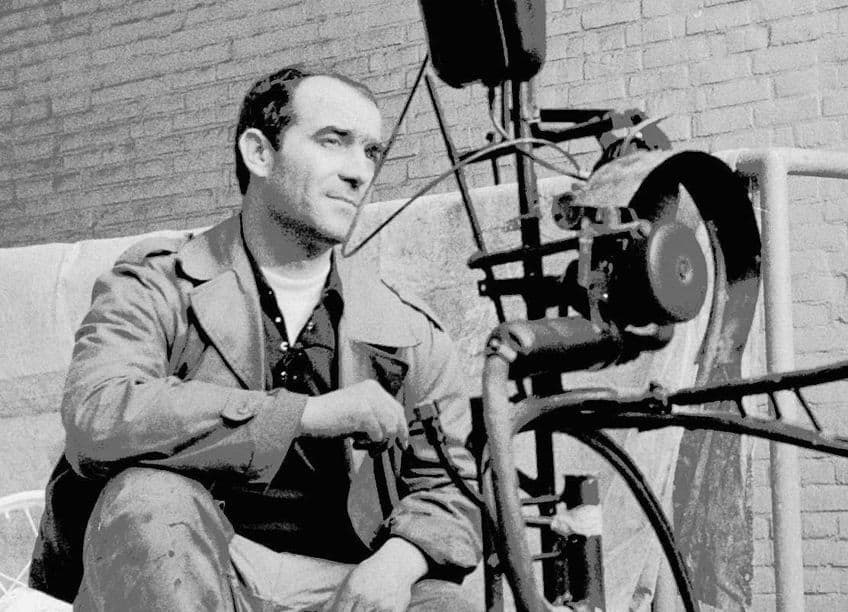
The piece was first exhibited at the Museum of Modern Art in New York in 1960, and it immediately captivated audiences with its raw energy and unpredictability. Critics were equally fascinated, with some praising Tinguely’s ability to capture the chaotic spirit of New York City, while others expressed concern about the dangers of such a self-destructive work of art. Homage to New York remains a significant piece of art history, challenging traditional notions of sculpture and inviting viewers to consider the fleeting nature of existence.
Cloud Canyons No. 3: An Ensemble of Bubble Machines (Auto Creative Sculptures) (1961)
| Artist | David Medalla (1942 – 2020) |
| Artwork Date | 1961 |
| Medium | Metal, Perspex, 2 compressors, 2 timers, water, and soap |
| Dimensions (cm) | N/A |
| Movement | Kinetic Art |
| Style | Sound and movement |
David Medalla, born in Manila, Philippines in 1942, is a renowned Kinetic Artist whose works are characterized by their use of natural forces and chance. Cloud Canyons No. 3: An Ensemble of Bubble Machines (Auto Creative Sculptures) is a seminal work by the Filipino artist David Medalla, created in 1963 during his time in London. The work is a sculpture installation that consists of several bubble-generating machines arranged in a circular formation. The machines are activated by a complex system of pneumatic tubing, creating a continuous flow of bubbles that fill the surrounding space.
Medalla’s Cloud Canyons No. 3 is a significant work in the history of kinetic sculpture and participatory art. The work is characterized by its use of technology and its emphasis on movement and interaction, inviting viewers to engage with the work and become part of the creative process.
The work’s playful and interactive nature also reflects the spirit of the 1960s, a time when artists were exploring new ways of creating and experiencing art. Medalla’s work also draws on the tradition of Fluxus, a movement of artists who rejected the idea of art as a commodity and instead sought to create works that were accessible, participatory, and often humorous. Cloud Canyons No. 3 embodies many of the core principles of Fluxus, including its focus on process and the importance of the audience’s role in shaping the work.
Pendulum Music (1968)
| Artist | Steve Reich (1936 – Present) |
| Artwork Date | 1968 |
| Medium | Music, speakers, and human |
| Dimensions (cm) | N/A |
| Movement | Kinetic Art |
| Style | Sound and movement |
Steve Reich, born in New York City in 1936, is a celebrated American composer and musician who is widely regarded as one of the pioneers of minimalist music. Steve Reich’s Pendulum Music is a groundbreaking composition that emerged during the experimental music scene of the 1960s. The piece was first performed in May 1968 at the Whitney Museum in New York City, and it quickly became one of the most iconic works of minimalist music.
Pendulum Music is a simple yet highly conceptual piece of music that consists of a group of performers swinging suspended microphones over amplifiers, creating a series of feedback loops that produce a range of sound frequencies.
The performers slowly increase the arc of the pendulum until the microphones reach the amplifiers, producing a loud and sustained sound that gradually fades as the performers decrease the arc of the pendulum. The piece is essentially a sonic exploration of the physics of sound, using the natural motion of pendulums to create a mesmerizing and hypnotic soundscape.
Reich’s composition was part of a broader movement in contemporary art that sought to challenge traditional notions of music and performance. Pendulum Music can be seen as a response to the avant-garde experimentation of the time, rejecting the traditional forms of music composition and instead embracing chance and indeterminacy as key components of the creative process. Through its innovative use of technology and its focus on the physical properties of sound, Pendulum Music helped to usher in a new era of minimalist music that continues to influence contemporary music to this day.
In conclusion, the Kinetic Art movement has had a profound impact on the course of art history. Its innovative approach to movement, time, and space has challenged traditional notions of static art and inspired a new wave of experimentation and creativity that continues to influence artists today. By embracing technology, engineering principles, and interactivity, Kinetic artists have expanded the possibilities of art and created works that are not only visually stunning, but also deeply engaging on a sensory level. The kinetic movement has produced some of the most iconic and influential works of the 20th century, and has left a lasting legacy in the world of art. As we move forward into the 21st century, the spirit of kineticism continues to inspire artists to push the boundaries of what is possible, and create new and exciting forms of art that captivate and engage audiences around the world.
Frequently Asked Questions
When and Why Did the Kinetic Art Movement Start?
The Kinetic Art movement emerged in the mid-20th century as a response to the changing cultural landscape of post-World War II society. It was built on the foundations laid by earlier artists, such as Marcel Duchamp and Alexander Calder, and was solidified through exhibitions such as Le Mouvement in Paris. The movement continues to evolve and expand to this day, as artists around the world explore the possibilities of movement, light, and sound in their work.
What Is Kinetic Art’s Definition?
Overall, the defining characteristic of Kinetic Art is its emphasis on movement, both as a formal element and as a means of engaging the viewer on a deep and experiential level. Whether through the use of mechanical devices, natural forces, or interactive technologies, Kinetic artists seek to create works that are alive and dynamic, constantly in flux, and always offering new possibilities for engagement and exploration.
How Has Kinetic Art Impacted the Art World?
The influence of Kinetic Art on the course of art history has been significant and far-reaching. Its emphasis on interactivity, engagement, and interdisciplinary collaboration has inspired a new wave of creativity and experimentation in the world of art, challenging traditional boundaries and opening up new possibilities for the use of technology, science, and other innovative approaches to art-making. As a result, Kinetic Art remains an important and influential force in the world of contemporary art, shaping the way that we experience and understand the world around us.
What Is Kinetic Energy in Art?
Kinetic energy in art refers to the use of movement or the suggestion of movement as a central element of an artwork. Kinetic art is a type of art that includes moving parts or relies on motion for its effect. It often involves the use of machinery or technology to create movement or the illusion of movement, but it can also be created through the use of natural forces, such as wind or gravity. Kinetic energy in art can be traced back to the early 20th century, when artists began to experiment with movement as a means of expanding the possibilities of art. Some of the pioneers of Kinetic Art include Naum Gabo, Alexander Calder, and Jean Tinguely. These artists created sculptures that moved, either through the use of motors or through natural forces such as wind or water. Kinetic energy in art can also be seen in other forms of art, such as performance art, where movement is often used as a means of expression. In addition, kinetic energy can be used in installations, where movement is created by the viewer’s interaction with the work.
Nicolene Burger, a South African multimedia artist and creative consultant, specializes in oil painting and performance art. She earned her BA in Visual Arts from Stellenbosch University in 2017. Nicolene’s artistic journey includes exhibitions in South Korea, participation in the 2019 ICA Live Art Workshop, and solo exhibitions. She is currently pursuing a practice-based master’s degree in theater and performance. Nicolene focuses on fostering sustainable creative practices and offers coaching sessions for fellow artists, emphasizing the profound communicative power of art for healing and connection. Nicolene writes blog posts on art history for artfilemagazine with a focus on famous artists and contemporary art.
Learn more about Nicolene Burger and about us.
Cite this Article
Nicolene, Burger, “Kinetic Art – The History of the Kinetic Art Movement.” artfilemagazine – Your Online Art Source. April 24, 2023. URL: https://artfilemagazine.com/kinetic-art/
Burger, N. (2023, 24 April). Kinetic Art – The History of the Kinetic Art Movement. artfilemagazine – Your Online Art Source. https://artfilemagazine.com/kinetic-art/
Burger, Nicolene. “Kinetic Art – The History of the Kinetic Art Movement.” artfilemagazine – Your Online Art Source, April 24, 2023. https://artfilemagazine.com/kinetic-art/.


